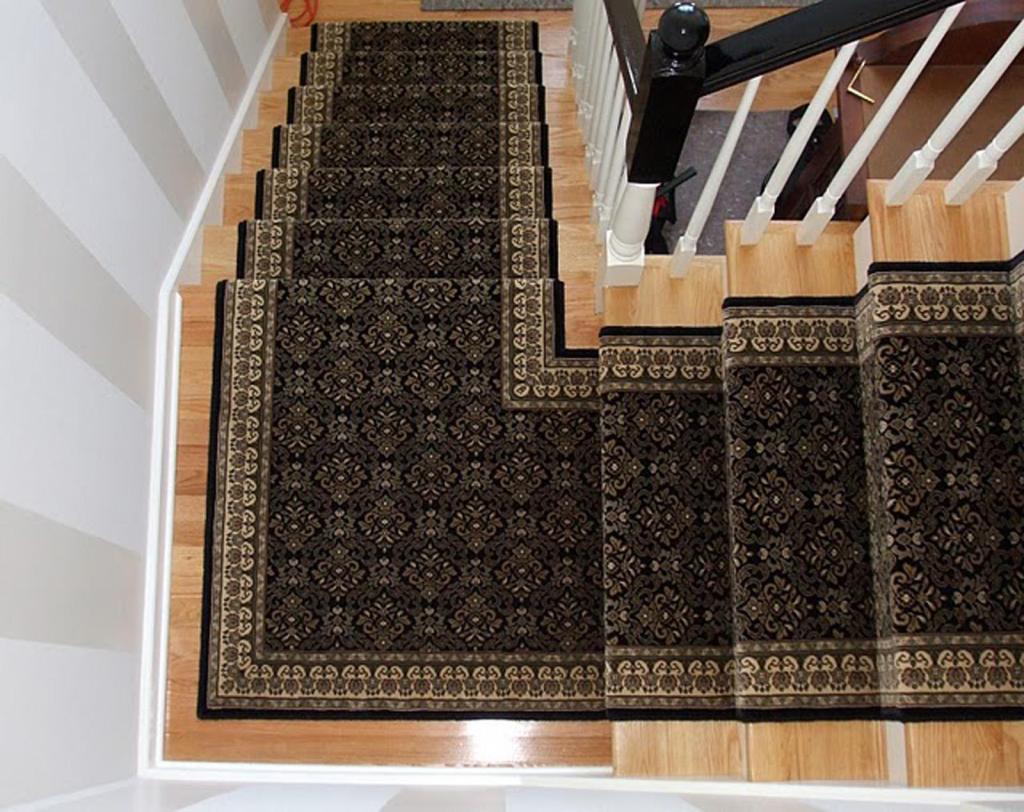You walk up them, you walk down them, perhaps countless times a day. When you look down, though, do you see any sign of your personal style?
Staircases, once decorated with detailed, elaborate runners in the Victorian era, have been forgotten in many homes, or at least bumped down on the decorating to-do list.
“Stairs are ignored. Period,” says Genevieve Gorder, host of HGTV’s “Dear Genevieve.”
“People think of stairs and hallways as strictly utilitarian — a place to get somewhere else,” she says. “But they are some of the most beautiful places to decorate.”
FIRST IMPRESSION — Adding a runner to a staircase in the front of the house can help make a good first impression, especially because entryways often don’t have the space to feature fabric-covered furniture or windows.
A runner can add color, texture and pattern to a space. And the carpeting can cut down on noise and provide a safer walking — or in the case of kids, running — surface.
“People want a more finished feeling, but they forget the stairway,” says Christopher Lowell, host of Fine Living Network’s “Work That Room.” “An upholstered staircase can give them that feeling.”
SIMPLE VS. TRADITIONAL — The traditional Oriental style is a runner mainstay, offering lots of colors around which to decorate.
“They’re somewhat timeless and classic, and a lot of times they’re not going to tie you to a particular trend,” says Eileen Hunyadi, who owns The Stair Runner Store in Oxford, Conn., with her husband, John. “Traditional styles can be around for quite a long time and you can work other things in without being stuck in a time warp.”
On the other hand, Lowell favors something simple and neutral, like a textured sisal wool runner.
“The idea is to add texture and luxury to the space but not drown the space or lock in any overt patterns,” he says.
Hunyadi, whose store sells mostly traditional styles, says more people have been asking for something nontraditional.
Her store has started to carry tonal looks, and runners with scrolls, trellises and fabric-type patterns — styles that made up about 30 percent of sales during the last few years.
However, carpeting with more pattern will show less dirt and dust than a more solid carpet, she notes.
BYE, BYE, WALL-TO-WALL — Since hardwood floors have made a comeback over the past few decades, many homeowners are shopping for runners because they’ve either ripped out wall-to-wall stair carpeting or have moved into new homes with all-hardwood floors.
Homeowners also want runners to combat stairwell echoes, or for safety.
“We have people who have fallen down the stairs, and we also have people who have dogs who have fallen down the stairs,” Hunyadi says. “A hardwood stair is certainly more slippery than something with carpet on it.”
MAKING IT WORK — Hunyadi advises coordinating a runner with the colors and style of the home’s main floor, not the upstairs.
“The lower part of the house is really where you’re going to view the stair runner,” she says.
Many homeowners try to match the runner to a color in the home, Hunyadi says, which can be tricky, so she points them to a complementary hue.
As Gorder puts it: “It’s not about matching so much as creating a sense of flow. Pull colors that are in your home that you like, and connect them to the staircase.”
The staircase is also a good place to try something new. “It’s a great place to debut something, but make sure there are connective qualities that make it feel like it’s supposed to be there,” Gorder says. “This is an opportunity to play. You can introduce more color and be a little bit more bold.”
RAW MATERIALS — Besides style, consider price. Runners are generally made of wool or a synthetic fiber.
Hunyadi says her wool runners generally cost 25 percent to 30 percent more than synthetics, but there is some price overlap among higher-quality synthetics and lower-end wools.
Wool is softer to the touch, she says, has more of a matte look and releases dirt more easily. Synthetics, which used to look a little shiny, still catch the light differently than wool, and hold onto dirt more.
While wool carpeting can actually wear away from use, synthetics do not.
“If you put the two side by side, you can tell the difference,” says Hunyadi. “But when you take the other one away, many can’t.”
Whichever material you choose, take care of it.
“Take off your shoes, vacuum, vacuum, vacuum and have it professionally cleaned as appropriate,” once every year or two, she says.
CARPET ALTERNATIVES — If you want to add style to your staircase without carpeting, Gorder suggests tiling the risers — the vertical part of the stairs that gets scuffed easily. Or try making a paint “runner” in a bold shade of marine paint, or sanding one, creating the look with contrasting wood colors.
“Painting a runner down the stairs in a pattern, stripe or polka dot is a really contemporary way to attack the stairs,” she said.
Copy the Story Link
Send questions/comments to the editors.



Success. Please wait for the page to reload. If the page does not reload within 5 seconds, please refresh the page.
Enter your email and password to access comments.
Hi, to comment on stories you must . This profile is in addition to your subscription and website login.
Already have a commenting profile? .
Invalid username/password.
Please check your email to confirm and complete your registration.
Only subscribers are eligible to post comments. Please subscribe or login first for digital access. Here’s why.
Use the form below to reset your password. When you've submitted your account email, we will send an email with a reset code.